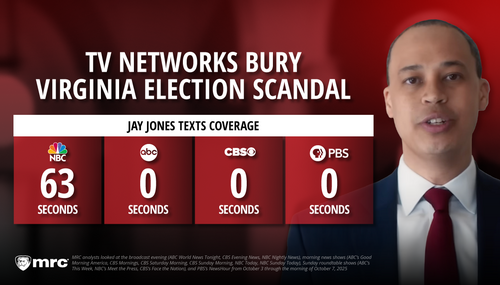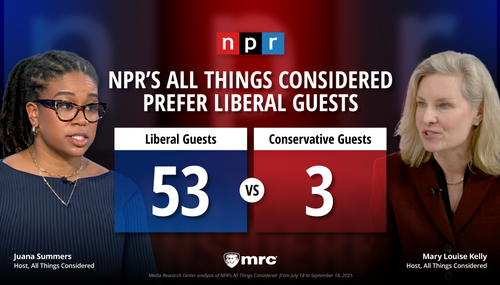On Sunday, in a report which I contend would surely have been published on a weekday -- and more importantly, published with far greater clarity -- if a Republican or conservative were in the White House, the Associated Press's Paul Wiseman essentially explored the following question: "Why aren't people spending more if they're so much richer?"
The answer he found, which should surprise no one in touch with reality, is that quite a few of us aren't richer. We're poorer. But Wiseman also cryptically revealed some of the dollar amounts involved and enough other information to enable one to back into an estimate of the shocking degree of wealth redistribution which has taken place during the recession and the first term of the Obama administration -- and it's not in the direction you might think.
Here are the key paragraphs providing the evidence. Also note the obfuscating headline:
Rising US wealth doesn't generate spending surge
The stock market rallied to record heights last month, home prices have rebounded and the wealth of American households has returned to where it was before the Great Recession.
That's just what Federal Reserve Chairman Ben Bernanke said he wanted when the Fed announced a third round of bond purchases last September.
The purchases weren't just meant to push interest rates down and make it cheaper for businesses and consumers to borrow - the traditional aim of the Fed's easy money policies. They were also designed to pump up stock and house prices, making Americans feel richer and more willing to spend - a process economists call the "wealth effect."
But the wealth effect may not have had the economic impact Bernanke hoped it would. Sure, the Dow Jones industrial average is up 11 percent since the bond-buying policy was announced in mid-September, despite plummeting Wednesday and Thursday on news that the Fed could end the purchases by the middle of 2014. And overall household wealth hit $70.3 trillion at the end of March, regaining the $12.7 trillion lost in the recession.
... Why aren't the impressive increases in wealth helping the economy bounce back as briskly as it normally does four years after a recession?
Economists cite several reasons. The biggest gains aren't going to the vast majority of Americans. Many families are still nursing big losses on the value of their home, and the big drop in home prices from 2006 through 2011 has undermined their confidence. Moreover, their incomes have been crimped by a weak labor market and tax hikes that took effect in January.
... The disparity shows up in numbers (New York University economist Edward) Wolff calculated. He found that the average U.S. household's net worth rose this year to $522,000. But the average is skewed higher by the vast net worth of America's wealthiest - Bill Gates' $67 billion, for instance, according to Forbes magazine.
So Wolff looked at the net worth of the median U.S. household - those smack in the middle, where half of households earn more and half less. (Note: That should be "where half of households have more and half less." -- Ed.) The median family's net worth is far more modest than the average: $61,000, Wolff estimates. That is $50,800, or 47 percent, short of where it was in 2007.
For ordinary Americans, any gains in wealth have been partially offset by losses in income. According to Sentier Research, median household income in April was $51,456, nearly 7 percent lower when adjusted for inflation than it was when the Great Recession began in December 2007.
One doesn't even need to do a spreadsheet to demonstrate what Wolff and Wiseman have revealed in two statements, one of which requires getting an actual number to replace Wiseman's vague reference to "regaining the $12.7 trillion lost during the recession":
- Median wealth has dropped by $50,800 from $111,800 to $61,000 during that time.
- Wiseman tells us that all of the nation's households combined have gained back all of the wealth lost since late 2007. He understated the situation. His $70.3 trillion ties to the Federal Reserve report showing $70.35 trillion as of the first quarter of 2013; but that's really $16.2 trillion higher than the 2008 low-point figure of $54.16 trillion, and $3.5 trillion greater than the $12.7 trillion loss (from 2007 to 2008) Wiseman cited.
Based on those two facts, the truth about how much wealth has flowed to those above the median is somewhere between two extremes (with 118 million U.S. households).
At one extreme, if the median dropped by $50,800, it's conceivable, though ridiculously unlikely, that the combined loss of almost everyone in the bottom half from 2007-2012 could still have been close to zero. If that's the case, a lot of people in the top half would have had to have taken a serious bath and not recovered in the past 5-1/4 years, but that would still leave the top half of everyone on the whole with the entire $3.5 trillion more in wealth noted above.
At the other extreme, let's assume that everyone below the median on average suffered a $50,800 loss in net worth. If that's the case, their total loss would have been $3 trillion ($50,800 times 59 million household), and those in the top half would have gained a combined $6.5 trillion ($3 trillion plus the overall $3.5 trillion gain).
Obviously, the truth is somewhere between the two signficant extremes just cited. So we can say that in the past 5-1/4 years, somewhere between $3.5 trillion and $6.5 trillion in wealth has flowed from the bottom half of households to the top half.
It turns out we can narrow it down -- but a spreadsheet will help explain things:
Multiply the figures for quartiles found in a table at the Conversable Economist blog which appear to tie into the Fed's work by slightly lower figures for number of households, the total net worth of the bottom half was only $1.7 trillion in 2007 (assuming 116 million total households) and fell by over $1 trillion during the next three years to $669 billion (assuming 117.5 million total U.S. households). Even if the bottom half somehow got back to $1 trillion by the end of this year's first quarter, that would still leave a $700 billion loss in net worth for the bottom half since 2007, and a $4.2 trillion increase ($3.5 trillion above plus $700 billion) for the top half.
So the realistic range of the real answer is that the top half is at least $4.2 trillion but probably not more than $4.5 trillion richer than it was at the end of 2007 (before considering inflation), and the bottom half is at least $700 billion (or about 40%) and probably no more than $1 trillion (about 60%) poorer.
In a Republican or conservative administration, AP writers like Paul Wiseman would have figured out how to explain the situation coherently to their readers -- and to condemn it while doing so -- instead of making me do the explaining and remaining strangely (for an AP writer) noncommittal. It seems that he might really have been hoping that no one would try to decipher his burial of the lede.
Barack Obama said he wanted to "spread the wealth around" to Joe the Plumber in 2008. He just worked to spread it to the top half of households. Meanwhile, largely because of housing policies which have kept values low and the new-home market in the doldrums, the bottom half has seriously suffered. This is of course not only the opposite of what his supporters expected, but also the opposite of what his supporters believe has happened.
Cross-posted at BizzyBlog.com.





